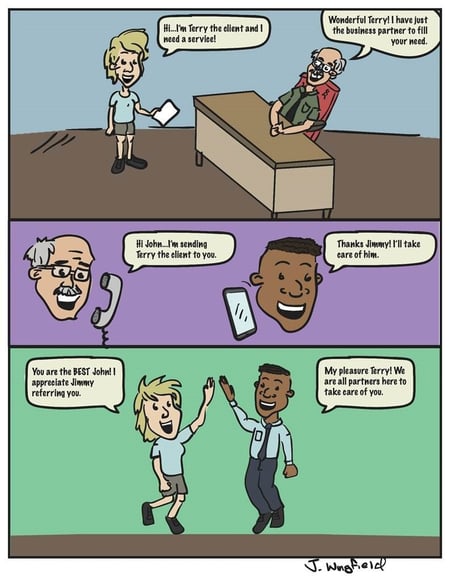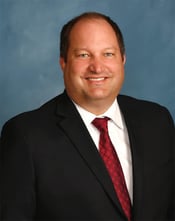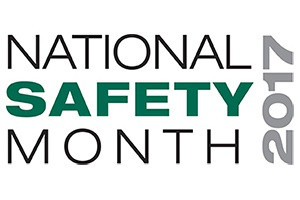Today we’re sharing insight from guest blogger Terry Ploetz, Vice President of Business Banking for Centier Bank. We hope you enjoy Terry’s wisdom and perspective.
 Time is a known and limited resource. In our daily lives we strive to save time for our own purposes. For those in a service market or sales position, growing your portfolio requires select and focused behaviors that take up quite a bit of time. To sustain future growth, you have to become more efficient or spend more time doing the work you did in prior years. At some point, the model breaks down; you can’t create or make more time.
Time is a known and limited resource. In our daily lives we strive to save time for our own purposes. For those in a service market or sales position, growing your portfolio requires select and focused behaviors that take up quite a bit of time. To sustain future growth, you have to become more efficient or spend more time doing the work you did in prior years. At some point, the model breaks down; you can’t create or make more time.
So now picture that life where you are 5-6 years into a job and you feel the constraints of your personal capacity. To keep growing, you make tough choices that affect the balance of your life. Less time with family, less time at the gym, less time with your kids so you can work more or attend more functions to help your production. The effect can be horrific, as marriage and family life begin to diminish because you simply can’t give them the time they need to be nurtured because you are working more to keep production in a growth phase.
This blog is a glimpse into finding balance and success at work and at home through the art of giving. You can sustain growth in business and create more time for what matters most to you by focusing on everyone else. It all starts with a radical change on how you refer business and how you see yourself as a resource to your clients. The jumping off point is putting your clients’ interest first and maximizing value through sensible referrals.
The system and method I recommend fully is to first give of yourself often and multiply your brand with caring individuals of like mind and spirit. Though I could go into the exact methodology and factors needed to evaluate in creating a solid focused networking group, for now let’s just hone in one essential premise. The group you belong to and interact with has to give without attachment. You have to interact freely with each other without ever expecting a referral in return. This requires a level of trust that isn’t easy to obtain and steady and consistent effort towards serving others.

Today our normal business practice is to seek out a win-win scenario. Said plainly, I give you a referral, at a later date you return the favor and give me a referral. In that framework we both feel respected and aligned for future business as long as we keep the tally even. However, the tally is never even and keeping score leads to friction. Imagine one professional sharing ten referrals and in return getting zero from his counterpart. Would you imagine that framework would last and flourish?
Some networking groups even require referrals at time of meeting. The flaw in the win-win methodology of sharing is the friction it can and often does create. Why is there friction in the first place? I contend the math is wrong. There is a real element of value that is not counted and it is essential to identify.
What is not counted is the trust quotient. When I give a referral to another colleague and that colleague does a great job for my client, I get something real and valuable in return. The client referred thinks of me as a trusted advisor and a problem solver…as long as my colleague does a great job for the client. The client just got a need solved, by a colleague of mine, and is now very thankful I made the connection. But more importantly, they trust me more than they did before the referral was made.
What is the value? Well now my client is less likely to move on from our relationship as I have solved a problem or need for them. Gaining more trust to fight attrition is key in sustainable sales models.
The underlying effect of this new development is that it leaves me and my colleague with no friction. I am not expecting a referral in return. I just gave without attachment and it felt great. I helped minimize a potential risk for my client and they love me for it. Moreover, the colleague gained a new client for their business growth and they love me for that result. When we see each other I am not asking for business in return, I am thanking them for a job well done. You can’t keep score and win.
When you become personally invested in the success of your client, making meaningful connections for them comes easy. It is more fun, feels more natural, and in the end you make a much bigger impact. Being genuine in your approach and putting the customer first is the basis for all referrals. Swimming in this framework is the only way I know how to create my unfair advantage in the marketplace.
What I can’t articulate is when the goodness will come to you. You have to truly buy-in to the trust factor and goodwill you create by making connections for others without any immediate benefit. In this framework, you become free of wasted thought and interact with no friction.
What’s The Risk?
The risk is running out of time and losing balance in both your work and personal life. When you don’t use this framework, you will spend more time generating business.
In my experience, when truly working with 10-12 other like-minded centers of influence, you can capture more business in less time.
Skeptical about this premise? Go check the national average on “touches” before a client begins to work any service or sales company. My research says it is 8 touches before you get meaningful business. When you get referred to the business versus calling them cold, the touches go down to an average of 3 before meaningful business happens. Therefore, it is less than half the time to go from meeting someone to serving them. That time saved based on the trust factor is real and opens doors for more sales, or more time at little league, or a night out with the better half. You take your pick. But if you work for the benefit of others in a focused networking group, you can find yourself more time and sustain growth in all areas of your life.
This content was written and shared by guest blogger, Terry Ploetz.
 Terry is a second-generation banker, serving St. Joseph and Elkhart Counties. He has built a career financing and growing businesses across the country as a consultative banker that relies heavily on understanding his client’s needs and connecting them to partnerships that create efficiencies and reduce risk. His passion and enthusiasm as a business resource have resulted in being named Business Development Corporation of South Bend’s Banker of the Year.
Terry is a second-generation banker, serving St. Joseph and Elkhart Counties. He has built a career financing and growing businesses across the country as a consultative banker that relies heavily on understanding his client’s needs and connecting them to partnerships that create efficiencies and reduce risk. His passion and enthusiasm as a business resource have resulted in being named Business Development Corporation of South Bend’s Banker of the Year.
Terry is a Culver Military Academy graduate and received his MBA from University of Phoenix in Tempe, Arizona. An active member of his community, he serves on the Coaches v. Cancer Board. He resides in South Bend with his wife and children.
Connect with Terry on LinkedIn. Connect with Centier Bank via their website, LinkedIn, Facebook, and Twitter.



